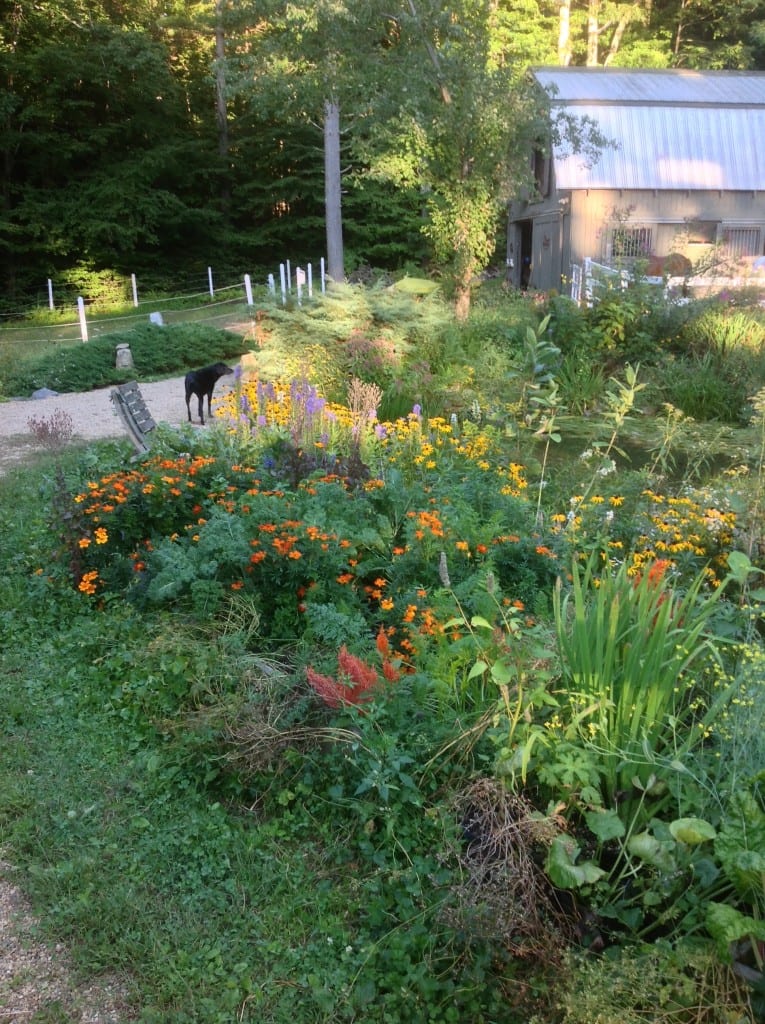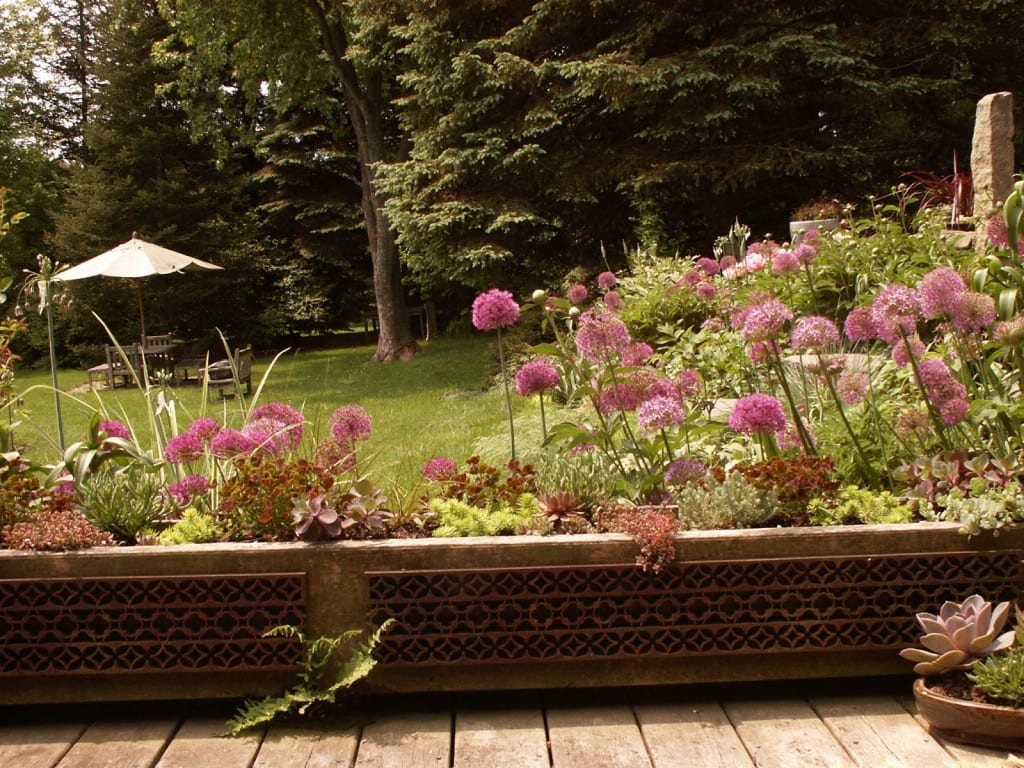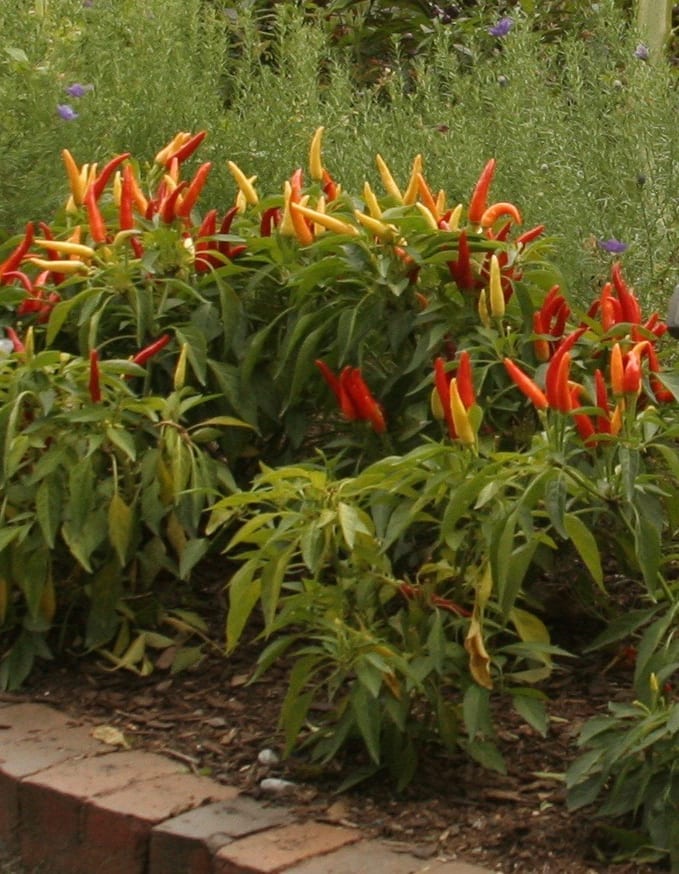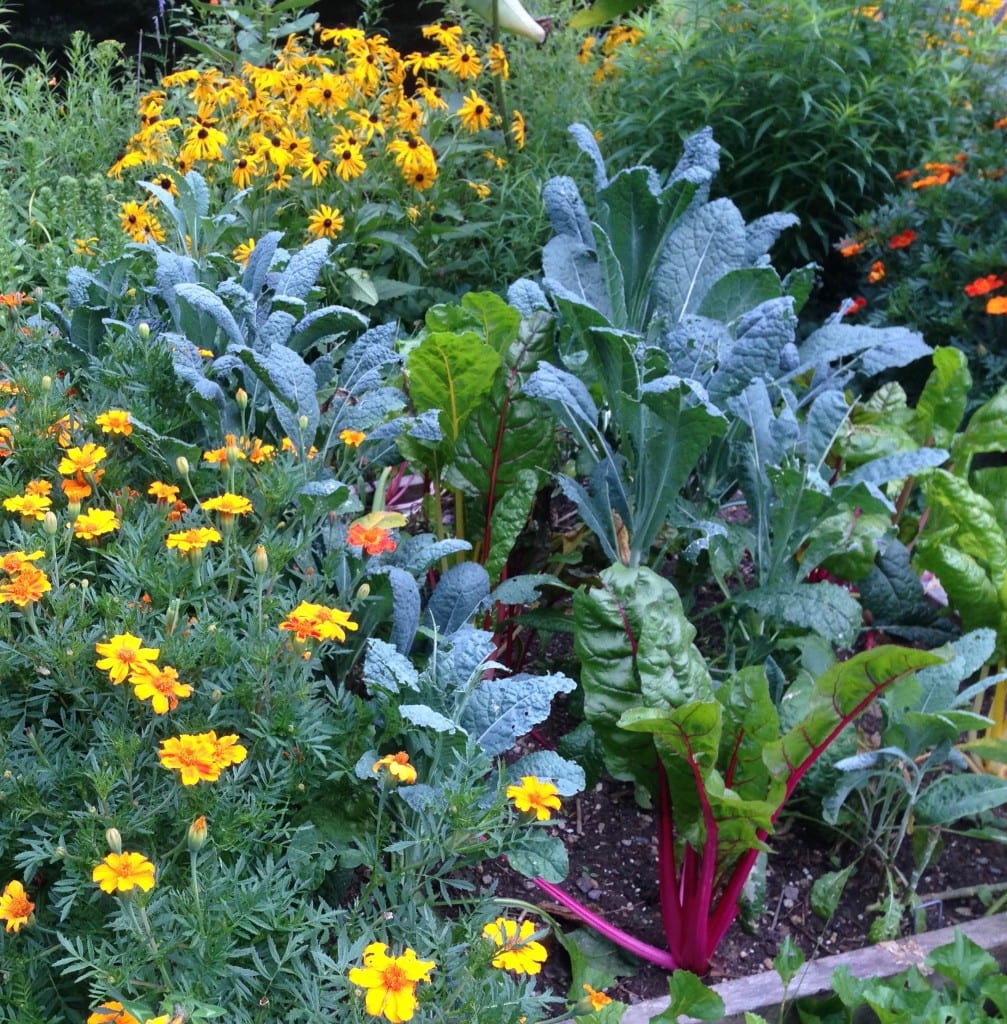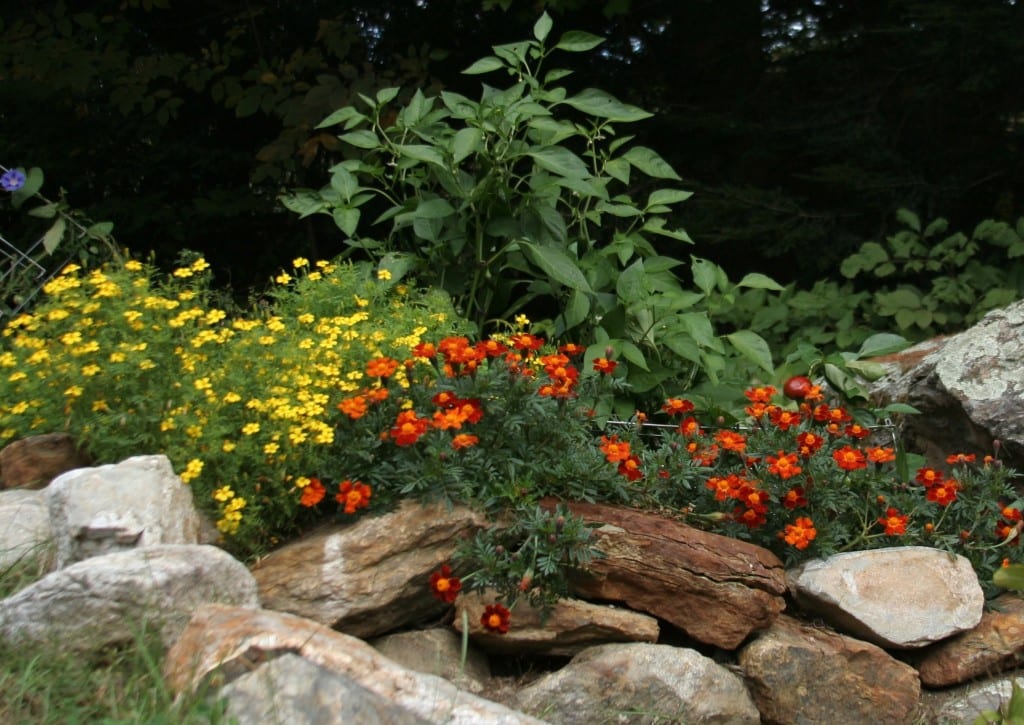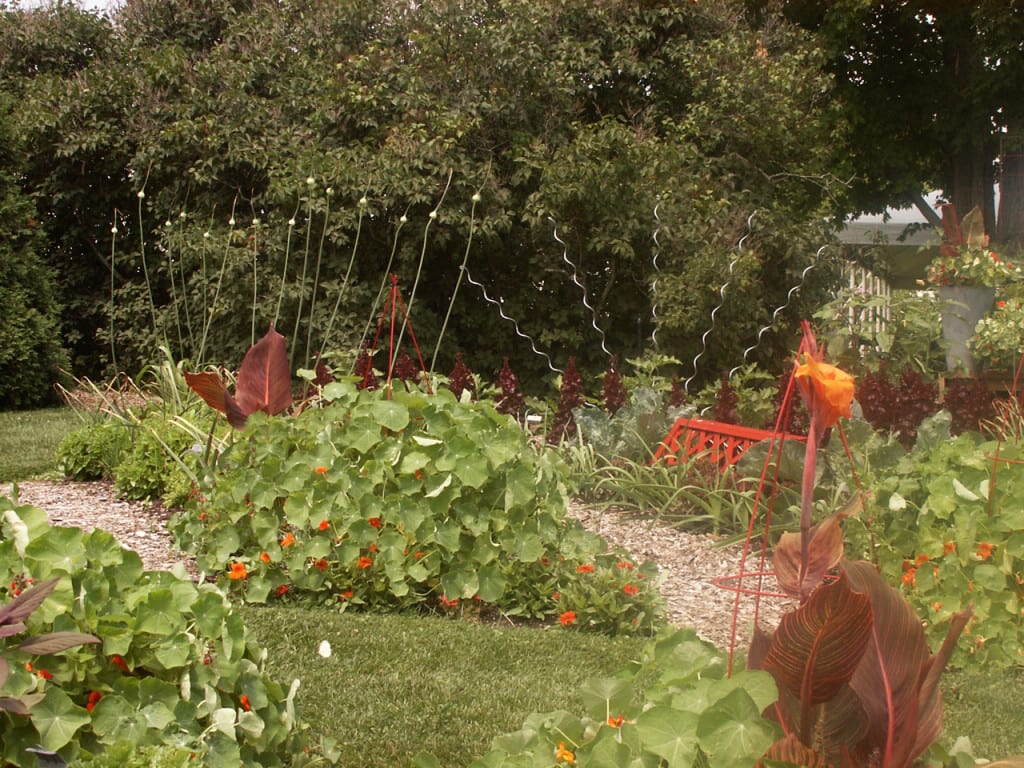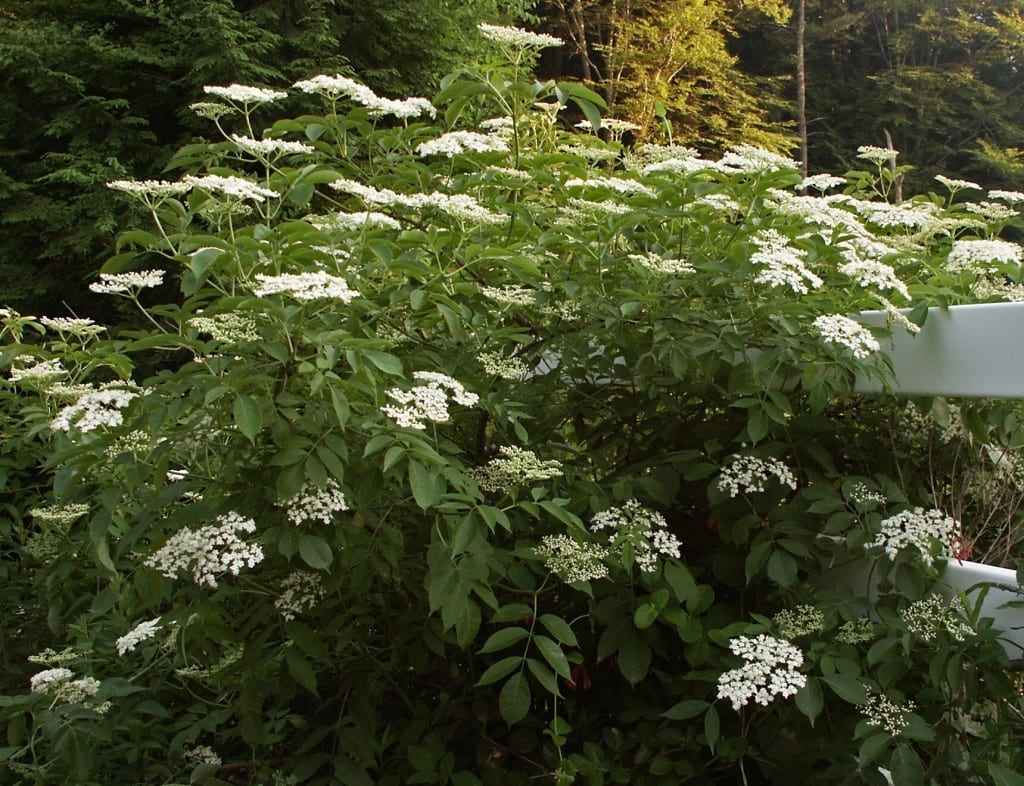by Ellen Sousa
Many people love the idea of including functional plants (edibles and herbs) in ornamental plantings, but in reality it’s not always easy to achieve an acceptable aesthetic without careful design, plant selection, and attention to each plant’s growth habit and needs. Vegetable gardens tend toward the messy side, and popular fruit and vegetables such as cucumbers and tomatoes are not easily integrated into beds with other plants. Here are some tips on designing attractive food gardens, along with some easy edible and ornamental plants that can happily co-exist here in Southern New England.
While plants such as tomatoes and highbush blueberries require their own space in healthy soil, with mulch and a consistent pruning and watering regime (not using overhead irrigation), not all edibles are as high-maintenance. Many culinary herbs, especially those hailing from hot Mediterranean regions, thrive in poor, dry, well-drained soils with no irrigation wanted or needed. Perennial herbs such as chives, sage, oregano, and thyme look right at home grown in flower beds, and when planted with or near other vegetables, their nectar-rich flowers attract lots of tiny pollinators and beneficial insects that help control pests on nearby tomatoes and broccoli.
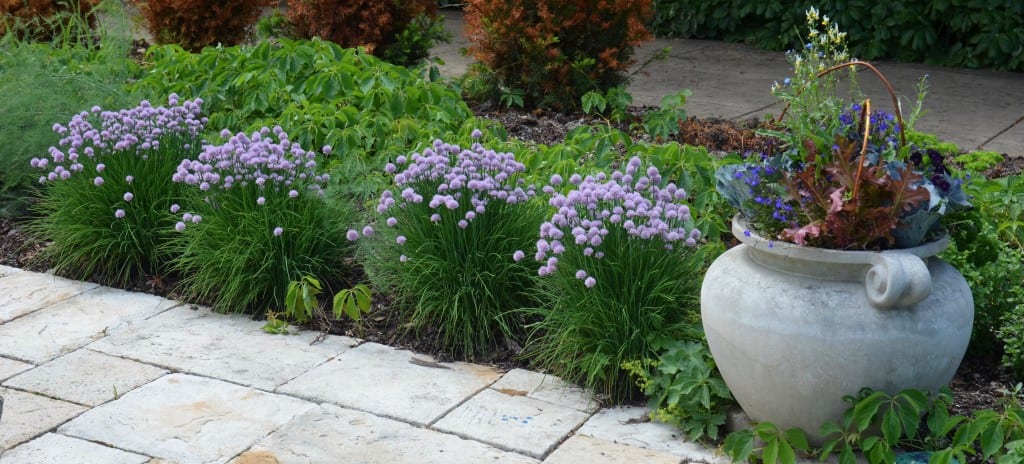
Purple chives (Allium schoenoprasum) with its edible flowers and stems, grows next to a container of red lettuce and trailing blue annual lobelia. (Photo: Noelle Johnson)
Members of the onion family, both the purple and the white garlic chives,(Allium tuberosum) and the later blooming eastern native Nodding onion (Allium cernuum) provide a succession of pretty flowers through the summer, and although Ornamental onions (sold as fall-planted bulbs: ‘Globemaster,’ ‘Purple Sensation,’ etc.) are not edible, their showy flower balls are a fun addition to any garden. The pungent taste of alliums also makes them unlikely to be eaten by rodents or deer.
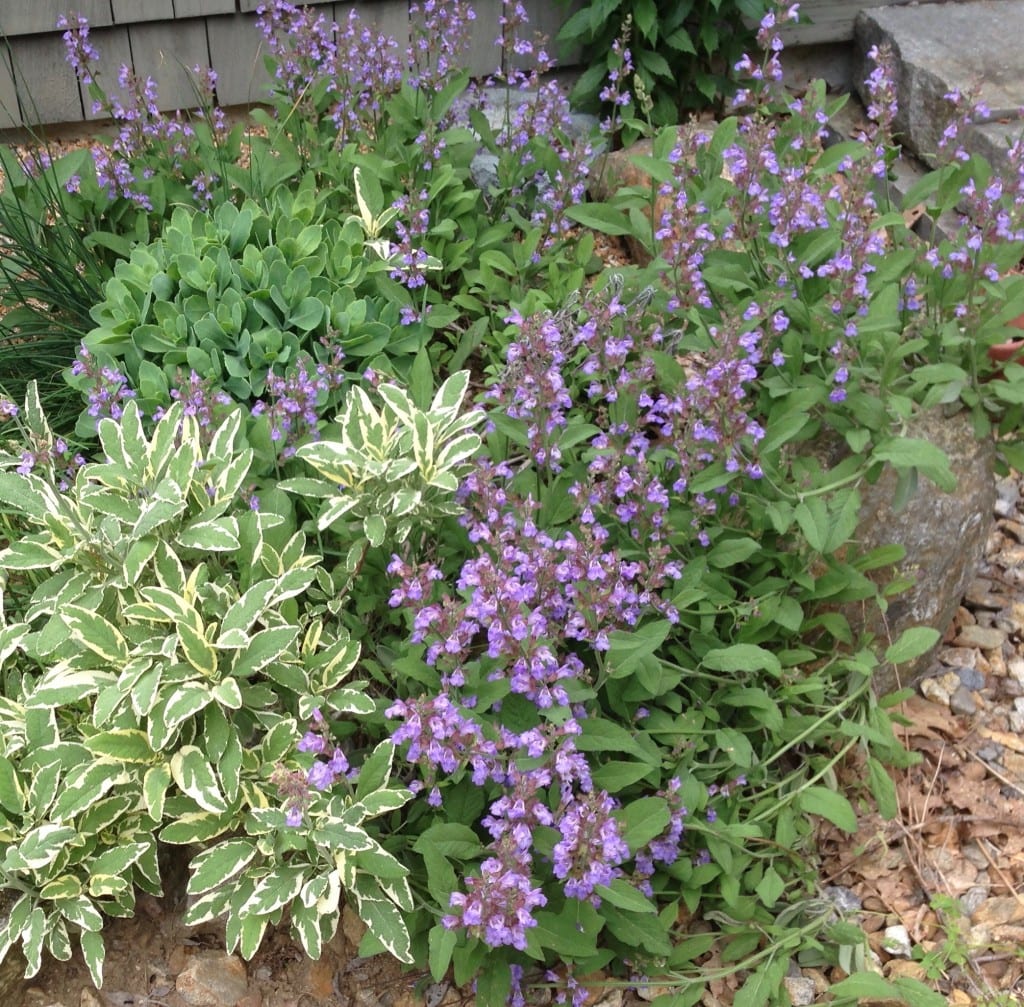
Common sage (Salvia officinalis) can be grown as a low shrub in places many other edibles might fail.
Common sage (Salvia officinalis), the traditional herb for flavoring poultry stuffing, can be grown as a low shrub in places many other edibles might fail – gritty, sandy or gravelly soil in full blazing sun. It’s especially valuable in gardens because it retains its soft green foliage well into winter even after everything else in the garden is brown or dead. All Salvia species have pretty flowers that attract hummingbirds, bees and other pollinators.
Some edibles are highly ornamental in their own right, and grouping them together rather than planting in straight rows is one way to highlight their ornamental qualities and distract from straggly or unattractive crops nearby. Ornamental peppers have fruit colors that change from one fiery shade to another as they ripen, and are well-suited to growing in pots or in beds with good soil and frequent irrigation. Taste varies between cultivars and some ornamental peppers are too hot to eat.
The blue leaves of Italian kale combine beautifully with other annuals for spectacular effect. Other edibles with ornamental fruits or foliage include Swiss chard, Italian eggplant ‘Rosa Bianca,’ and purple cabbage.
Lettuce, leafy greens, and other plants harvested for their foliage can be planted closely together in tight groupings and interesting patterns for a clean design effect. Combinations of red and chartreuse lettuce (pictured below) in staggered, triangle-shaped plantings provide color and food from spring until the summer heat kicks in. Leaves are individually harvested and plants thinned out over time as plants grow. Plants will bolt when summer heat hits, however, providing an opportunity to replant with fast-growing annuals. Annual herbs such as purple basil and Italian parsley can be used for similar effect, and these will stay green and leafy through the summer if kept watered and pinched back to prevent bolting.
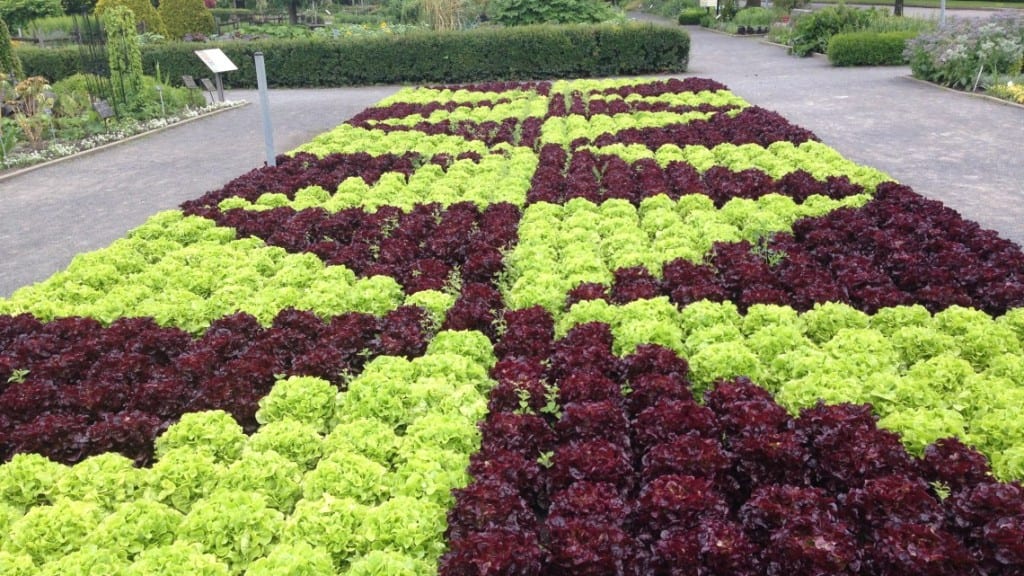
Chartreuse and red lettuce planted in tight groupings provide color and food. Photo: AAS/National Garden Bureau.
One easy way to dress up any vegetable garden is by planting low annuals as a colorful edging or in large swaths in and around beds. Marigolds (Tagetes spp) and Sweet Alyssum (Lobularia maritima) both bloom right up to first frost, and their small root systems won’t steal too much moisture or nutrients from nearby vegetables. They need full sun to bloom best, so plant on the southerly side of taller plants to keep them from getting shaded out. The abundant flowers attract pollinators and beneficial insects directly to where their services are needed, and the pungent foliage of the marigolds and the fragrance of the sweet alyssum will confuse vegetable pests from finding their target plants. Choose single-flowering varieties of Marigolds such as Gems rather than double forms for best nectar access by tiny pollinators. While the vegetables are growing, these companion plants hide unsightly plant stems, shade the soil with a living mulch, and after crops are harvested, the annuals will happily fill the holes left from the harvested plants.
When designing with edibles, use the same design principles as you would with any ornamental planting. Plant in groups for greater impact, create lines (using edging, bed layout and hardscaping) and repeat those lines through the garden to create unity and coherence. Repeated groupings of similar colors also help make sense of the often chaotic plant diversity and structure of vegetable gardens. Plants with bold, dramatic foliage provide focal points, as do garden structures with colors that tie into the defined color scheme. A trellis, arbor, or pergola provides vertical interest while providing essential support for vining edibles such as beans and grapes. Get creative and add whimsical elements that reflect your own character or that of your clients!
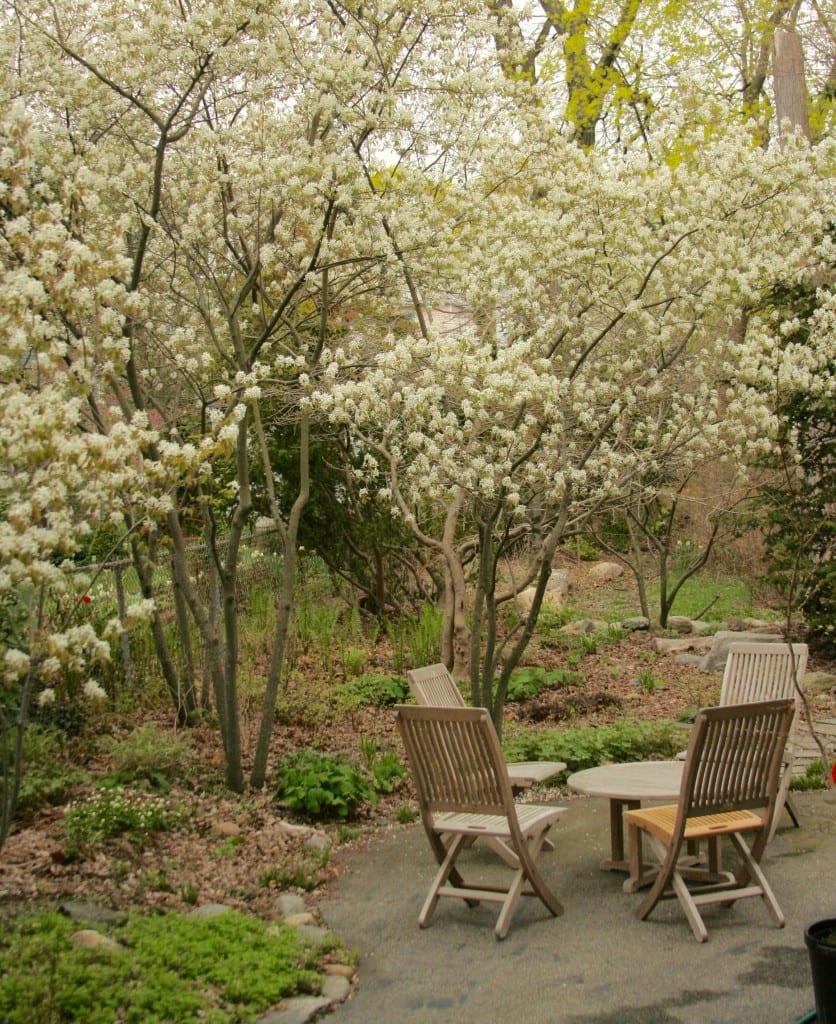
Serviceberry or Shadbush (Amelanchier spp) offers beautiful white flowers in April and colorful berries in June.
Also introduce your clients to fruiting native shrubs and small trees that won’t require attention during the heat of summer like the vegetable beds. For shady garden areas without enough sun to support sun-loving strawberries or blueberries, Serviceberry/Shadbush (Amelanchier spp) has small colorful berries that ripen in June, plus very early season white flowers in April. Fruits are tasty, but cedar waxwings and other birds will gobble them right up as they ripen.
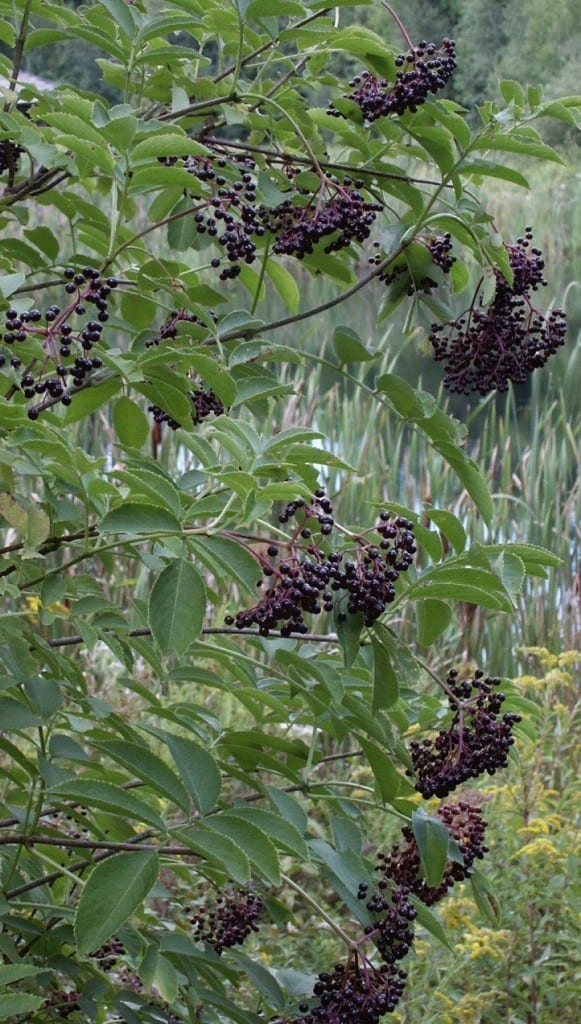
Elderberry (Sambucus canadensis) produces clusters of dark berries, perfect for making jam or wine or leaving as a food source for birds.
Elderberry (Sambucus spp) is a genus of native shrubs with lacy white flower clusters that bloom in early summer, followed by dark sugary fruits that can be used for making wine or jam, or left for the birds to eat. Fast-growing, sometimes reaching up to eight feet in just a few years, elderberries do best in full sun and a soil with good moisture retention – not for excessively dry sites. Pruning old stems every five years helps keep the shrub at a manageable size. Note that Japanese beetles do love elderberry and can heavily disfigure foliage, but an organically-maintained landscape with ample nectar flowering plants through the season will attract a tiny parasitic tachinid fly that is gradually reducing beetle populations in southern New England. Avoid setting up Japanese beetle traps or spraying adult beetles to avoid killing adults infected with these parasitic fly eggs.
See Edible and Landscape-worthy Native Plants of New England for more unconventional edible plants suitable for New England gardens.
About the Author
Ellen W. Sousa owns Turkey Hill Brook Farm, a native plant nursery and habitat farm in Spencer, Massachusetts and the author of The Green Garden: A New England Guide to Planning, Planting & Maintaining the Ecofriendly Habitat Garden. She provides coaching services to clients to guide them in the design and construction of landscapes that support pollinators and biodiversity. Ms. Sousa is also an overseer and instructor for New England Wild Flower Society.
Each author appearing herein retains original copyright. Right to reproduce or disseminate all material herein, including to Columbia University Library’s CAUSEWAY Project, is otherwise reserved by ELA. Please contact ELA for permission to reprint.
Mention of products is not intended to constitute endorsement. Opinions expressed in this newsletter do not necessarily represent those of ELA’s directors, staff, or members.

